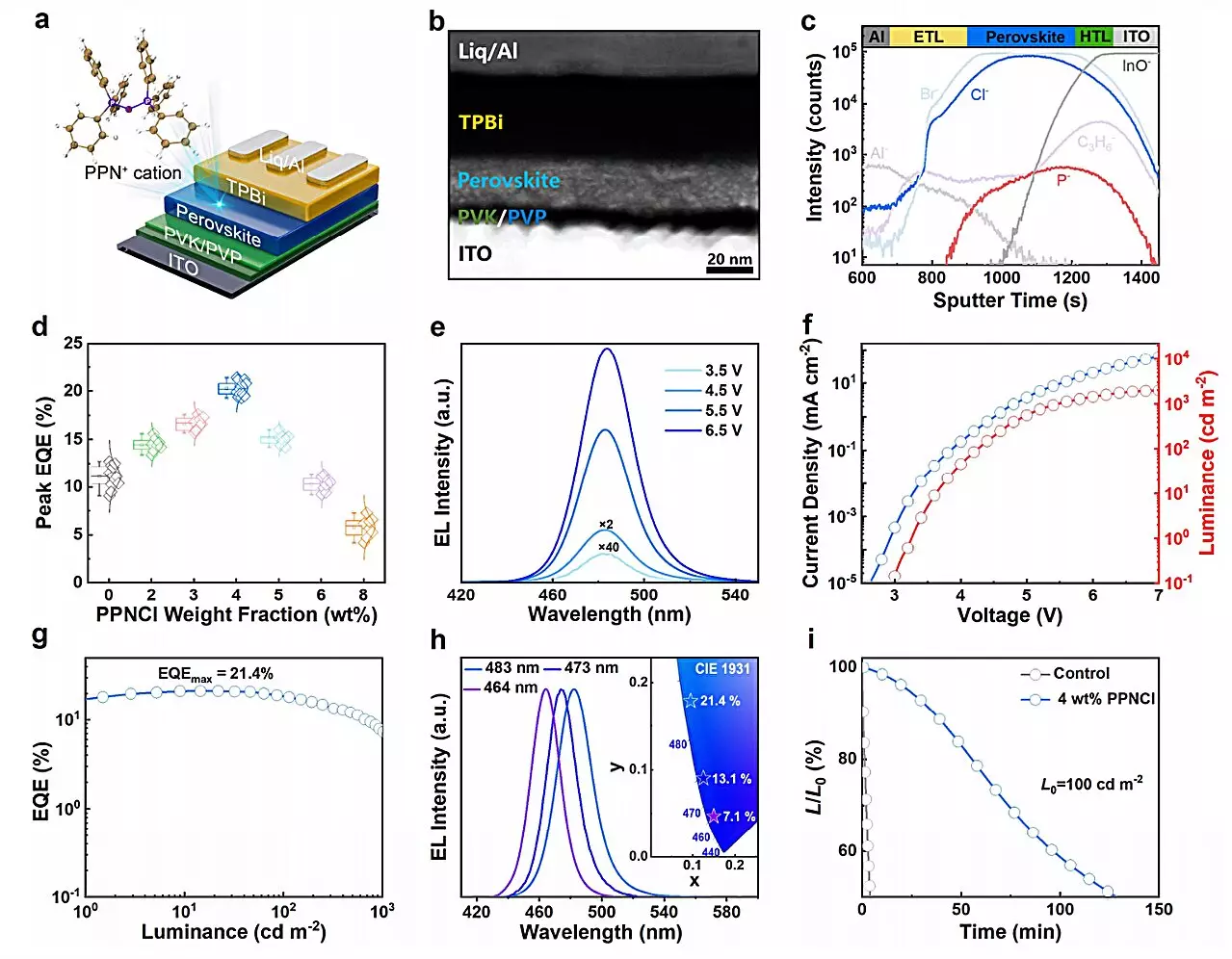Recently, Prof. Cui Linsong’s research team from the University of Science and Technology of China (USTC) in collaboration with Prof. Samuel D. Stranks’ team from the University of Cambridge, introduced a groundbreaking approach to improve the efficiency of blue light-emitting diodes (LEDs) based on perovskite materials. This advancement, detailed in their publication in Nature Photonics, addresses the longstanding challenge in the field of perovskite LEDs.
While green, red, and near-infrared perovskite LEDs have shown significant progress, the development of blue perovskite LEDs has been slower, presenting a considerable obstacle in the advancement of perovskite LED technology.
To tackle this issue, the research team devised a unique multifunctional ionic additive called Bis(triphenylphosphine)iminium chloride (PPNCl). This compound plays a crucial role in enhancing the performance and stability of blue perovskite LEDs by enabling precise control over the composition and distribution of perovskite phases.
Through their research, the team demonstrated that PPNCl effectively suppresses non-radiative recombination channels and ion migration, leading to a significant improvement in the efficiency and stability of blue perovskite LEDs. The compound interacts with perovskite components via hydrogen bonding, influencing the crystallization process and promoting the transition to high-dimensional phases with enhanced luminescence efficiency.
The utilization of PPNCl resulted in high-efficiency and stable blue perovskite LEDs, achieving a peak external quantum efficiency (EQE) of 21.4% with the emission peak at 483 nm. This marks a groundbreaking achievement in blue perovskite LED technology, signaling a promising future for further enhancements in perovskite LED performance.
The collaborative efforts of Prof. Cui Linsong’s team from USTC and Prof. Samuel D. Stranks’ team from the University of Cambridge have led to a significant advancement in the field of perovskite LEDs. The innovative approach utilizing PPNCl demonstrates the potential to revolutionize blue perovskite LED technology, paving the way for future developments and improvements in the efficiency and stability of these devices.



Leave a Reply